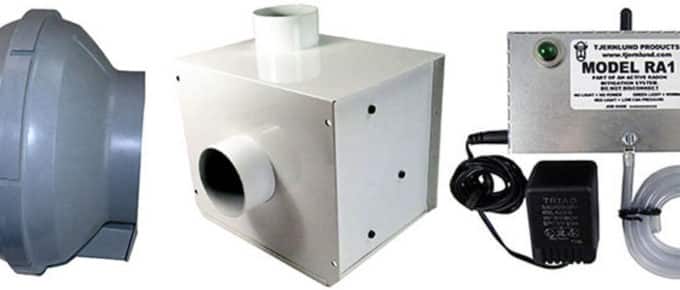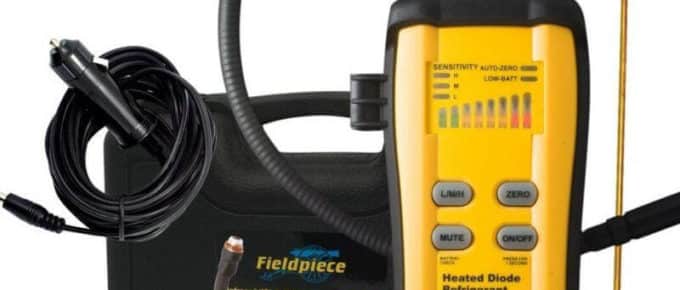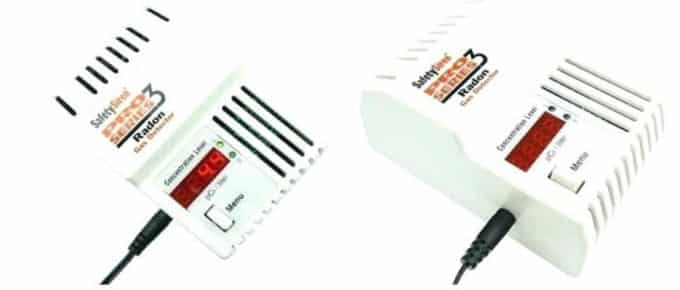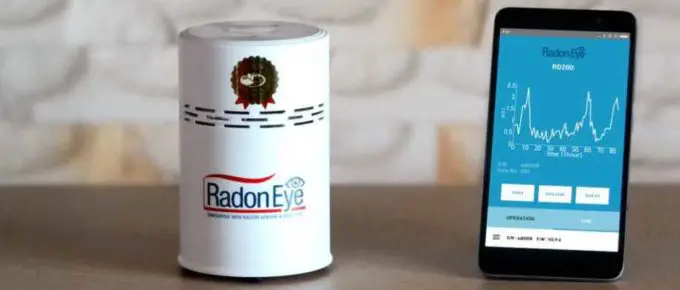There are a lot of questions that come to your mind while thinking about radon gases. The most common are its causes, symptoms, testing, mitigation, and ways to reduce it. The following post will give an answer to all the questions that often boggle your mind when it comes to radon gases.
FAQ On Radon Gas
1.What are the signs of radon in your home?
If radon is present in your house, your body might show up certain symptoms. These symptoms could be coughing blood, shortness of breath, persistent cough, chest pains or frequent infections. These are the early signs and symptoms and if persists for a longer time may lead to lung cancer. Nevertheless, this fatal stage comes only after long-term exposure to radon.
2. What causes radon in houses?
Radon gas is produced as a result of the decay of radioactive elements such as uranium and radium. Typically, radon moves up through the ground to the air above the ground. It gets into your home through the cracks or gaps in the floors or basements.
3. Can you reduce radon by opening windows?
Opening your home’s windows improves ventilation and circulation of air. Simply opening a window can reduce Radon levels by mixing outside fresh air with indoor air.
4. Are radon levels higher in the winter?
Radon levels are affected by cold weathers during the winter seasons. The highest levels of radon occur when you have your homes heated. As a result, more Radon gas enters your house. So, Radon levels are more in the winter season.
5. Are radon tests reliable?
Radon level varies a little on a daily basis. If you wish to have more accurate results, you should go for long-term radon tests. In case a faster result is required, a short-term test kit can be preferred.
6. How long do you need to be exposed to radon to get cancer?
Radon being radioactive causes lung cancer. Generally, long-term exposure to radon gas causes lung cancer. Radon exposure may take up to 10-15 years to develop cancer and sometimes even more. It depends on the level of radon gas you have been exposed to. Make sure to buy the best radon detector to safeguard yourself.
7. Are radon levels higher in the basement?
Radon gas is heavier than air. It is mostly present in the lower areas of buildings or homes. Therefore, basements have a comparatively higher level of Radon present than in your house. You can install an excellent mitigation radon fan in your basement.
8. Can radon seep through concrete?
Radon gas can seep particularly through unsealed concrete slabs or basements. Radon can also rise through the cracks, gaps and spaces in the floor because of its chemical composition.
9. What is the average radon level in a home?
The unit used to measure the radon level is picocuries per litre. Radon levels above 4pCi/L are considered dangerous. On an average the radon level 2-3 pCi/L in your home.
10. Are radon mitigation systems effective?
Radon mitigation systems can generally help you keep the radon levels at or below 2pCi/L. These tests are proven to be efficient and effective. The cost can depend on the size and structure of your house.
11. What level is needed for radon mitigation?
Radon levels below 2pCi/L are generally considered to be safe. A radon mitigation system is recommended in case the radon level is more than 4pCi/L in your house.
12. How long do radon fans last?
The national average for life of radon fans is 11 years. Most of the manufacturers give five years warranty from the date of installation. Depending on their usage, radon fans can last for more years. No accurate standard is currently is existence.
13. How much does it cost to get rid of radon?
Radon reduction systems can help you get rid of radon gas up to 99%. The cost depends on the size and structure of your house and the radon reduction method used. On average, the costs range from $800-$2500.
14. What are the dangerous levels of radon?
Radon is a radioactive gas. The acceptable level of radon in your house is less than or equal to 4 pCi/L. Radon levels higher than this can have alternate effects on your health and are dangerous.
15. How long does it take for radon mitigation to work?
On average, it takes around one to three days to remove radon from your home. It is required to be tested again after some time. If the levels come up to be below 0.4pCi/L, then to prevent more radon coming into your house, a radon mitigation system can be installed.
16. Is radon really dangerous?
Yes, radon is a radioactive gas. Long exposure to radon can even cause lung cancer or stomach cancer if ingested with water. An estimated 21000 lung cancer deaths have been caused due to radon.
17. Is radon only in basements?
No, radon is not present only in basements. Radon gas is heavier than air, therefore, it is mostly found in basements. Due to this people mistake radon to be present only in basements. Homes with a basement have more chances of having a higher radon level.
18. What is the acceptable radon level?
Radon is a radioactive gas. The acceptable level of radon in your house is less than or equal to 4 pCi/L. Radon levels higher than this can have alternate effects on your health and can lead to cancer as well.
19. Should I test my home for radon
Radon has emerged as a leading cause of lung cancer in non-smokers. Therefore, it is recommended to have your home tested for radon levels. The test is completed within a few days and it is generally not that costly.
20. Why is radon gas dangerous at high levels?
Radon is a radioactive gas. It can cause cancer as well. Prolonged exposure to radon may lead to lung cancer. This risk increases, even more, when you smoke. So, higher radon levels lead to increased chances of developing health hazards. Make sure you have a Radiation gas mask For your home.
21. Where is Radon most commonly found?
Radon is formed as a result of the decay of radioactive elements such as uranium and radium. It can be found generally in all rocks and soils. Radon can be found in water as well.
22. Is a radon level of 5 bad?
Yes, a radon level of 5 can be dangerous and hazardous for your health. Generally, radon levels below 4pCi/L are considered to be safe for you. Any higher levels of radon can cause health hazards such as Cancer
23. What is the highest radon level recorded?
Measured in the basement of a house in Boyertown, PA the highest Radon level ever measured was 2600 pCi/L. It was recorded in December in the year 1894.
24. When should you mitigate radon?
The acceptable radon levels are up to 4pCi/L. In case the radon level in your house is measured above this level at any time then it is recommended to mitigate radon. Through radon mitigation, the level can be brought to 2pCi/L.
25. What is NRPP?
NRPP is National Radon Proficiency program. It is a recognized certification program for radon professionals. It requires bilingual documentation of competence, knowledge and professionalism.
26. What is NRSB?
NRSB is the National Radon Safety Board. The NRSB certification is the formal recognition of professional excellence based on qualifications, high ethical standards, and continuing education in radon services.
27. Do all homes have radon?
As per reports, out of every 15 houses, one house has been recorded having the presence of radon more than the accepted level. Almost all the houses have a certain level of radon present in their house. It is not necessary to be a higher radon level.
28. How do you get exposed to radon?
Radon is present everywhere in the air. Everyone is exposed to radon to a certain extent. The sources through which people can be exposed to radon are soil, natural gas, water; buildings etc. Radon goes in the body through inhalation and ingestion.
29. What level of radon requires mitigation?
As per the EPA, it is recommended that you take action to reduce your home’s indoor radon levels if your radon test result is 4 pCi/L or higher. Any higher level or radon can be hazardous for you.
30. How do you re-mediate radon?
Radon can be re mediated through using treatments systems such as aeration or activated charcoal. These methods can help remove or reduce radon form domestic wallpaper.
31. What if radon levels are high?
Radon level above the accepted level in your house can be considered hazardous. If radon levels are high, you should take measures to reduce the level. Various radon reduction systems and methods are available for this.
32. How much radon in water is safe?
As per EPA and other states, the recommended drinking water standards for radon presence in water ranges from 300 to 10000pCi/L. No accurate standard is currently in existence.
33. Can radon affect well water?
Radon is formed as a result of decay and breaking down of radioactive uranium, thorium and radium. The elements emit radon gas into rocks, soil and groundwater. Therefore, there is a chance that well water is affected by radon.
34. How do I get rid of radon in my well water?
Radon from well water can be removed by the use of one of the two methods: Aeration Treatment and GAC Treatment. Aeration method involves spraying water or mixing water with air and then venting water from the air. GAC treatments involve filtering water through granular activated carbon.
35. Should I test for radon in water?
The risk of getting affected by radon is usually higher by inhalation than swallowing water with a high concentration of radon. Then too, testing water for radon can help you reduce the chances of such things.
36. Can radon be in city water?
The radioactive radon gas is produced when uranium, thorium or radium metals break down in rocks, soils and groundwater. Therefore, radon can be found in city waters as well.
37. Is radon in the water really dangerous?
Radon can get into your body either by inhalation or ingested from water. Inhaling radon can increase the chances of lung cancer. The risk of getting affected by radon is usually higher by inhalation than swallowing water with a high concentration of radon.
38. Does RO remove radon?
RO or reverse osmosis can lower the alkalinity of water as it can remove contaminants from water. Reverse osmosis does not remove the gaseous contaminating elements from water such as carbon dioxide and radon gas.
39. Does HEPA filter remove radon?
A HEPA filter can only remove particles or dust but not smoke gases or odours. Therefore, HEPA filters can only remove the particles of radon and reduce their progeny. They do not affect the radon gas concentration in your home or area. Radon will continue to be produced.
40. Where does radon come from in homes?
The radioactive radon gas is produced when uranium, thorium or radium metals break down in rocks, soils and groundwater. Radon usually gets into homes through the unsealed or cracked concrete basements or floors.
41. Do all homes have radon?
Yes, in The United States nearly one out of every 15 homes is considered to have the presence of radon at an advanced level. The estimated radon level is 4pCi/L or more.







Leave a Reply